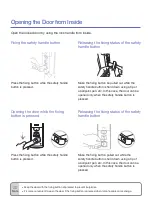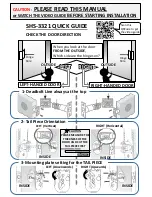
Check magnet position
If the door has been closed, but the calibration tool does not
recognise that the door is closed (Step 3), the position of the
magnetic plate needs to be checked or the number of magnetic plates
needs to be increased.
Step 4 should also be performed on the door while ajar. If the door is
identified as closed when it is ajar after Step 4, the magnetic field is
too strong.
Move the plate further towards the centre of the frame or make the
plate smaller
2.4.3 Use in escape doors
Use in an escape door
lock
Panic locks can be unlocked and opened from the inside by pushing
the door handle. The lock unlocks without the cam rotating. Some
locks require an antipanic cylinder since the cam can cause the lock
to jam when in certain positions. You need to clarify with the lock
manufacturer whether an AP cylinder must be used or not. Different
issues need to be clarified in advance when the DM Cylinder is used
in escape door locks:
– SLP lock or nonSLP lock
– Use of an AP cylinder required to prevent the lock from jamming
– Typical usage behaviour of the door.
Is the door normally opened with an authorised transponder or by
pressing the inside handle? The DM Cylinder records the cam's
movements and detects the lock status based on rotations and the
direction of rotation. It does not record retraction of the bolt and,
consequently, does not register the unlocking of the door either. Cam
monitoring is deactivated in the DM.AP2 Cylinder. Manual locking is
not monitored.
NOTICE
You must comply with the requirements in DIN EN 179 or
EN 1125 when fitting an escape door lock.
Use in an SLP lock
An SLP (selflocking panic) lock can be opened on the inside by
pressing the door fitting and locked when the door is closed. This
means that the DM Cylinder does not reliably indicate the bolt
position (at all). The DM.AP2 does not monitor the bolt position. This
means that only the door's opening status can be monitored. The
following setting should be configured.
Manual
Door Monitoring Cylinder
54 / 72
SimonsVoss
2 | Initial operation
















































